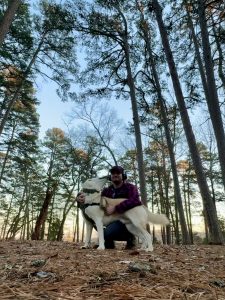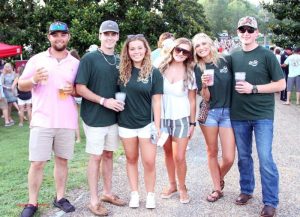


Located at the intersection of Morton’s Ferry and Cole’s Ferry in Providence in northern Halifax County, lies Noland Village. Once a commercial hub for northeastern Halifax County, the small community thrived as farmers brought tobacco for sale, their wives shopped at the general store, and families came to worship on Sundays. Nearly 150 years later, the town had all but vanished. The village could have been lost to time, had it not been for a resident who decided to take on a monumental task: resurrecting history.
Noland Village dates back to the early 1830s. The Halifax Church, still the oldest Presbyterian church in the county, was constructed around this time. The village was also home to the largest prize barn for processing tobacco within a 25-mile radius. Farmers would have their tobacco processed here, where it would then be sent down the Staunton River, on to the Roanoke River, eventually reaching Albemarle Sound, where it would be sent to London. As a result, this crossroads community became a commercial hub for the northeastern part of the county. The village’s country store became a post office in 1894 and operated as such until the First World War. The village was also home to a tavern, and county records indicate there was once a distillery in Noland Village.
By the 1980s, all that was left of the tiny village was the church and old country store. The late Roy Blanks, who had grown up in Noland Village, wanted it to be remembered as the thriving town it once was. Along with his brother, Keister Blanks, and his wife, Nannie Blanks, the three began to restore the village. They started by restoring the Halifax Church, which has remained virtually unaltered since its original construction. Their work even resulted in the church being added to the Virginia Landmarks Register in 1987. Once this project was complete, the trio researched the locations of other buildings that would have once been in the village. One-by-one, they purchased historical buildings from across the state, dismantled them, and then reassembled them in Noland Village.
Of these buildings include the Ordinary, originally built in 1789 in Prince Edward County; a 1732 farmhouse from King and Queen County; the Robert and John Carr Houses, both of Halifax County; the Baldwin House, originally located five miles up the Staunton River; the Hatcher Barn, located where the original prize barn was; and the Blanks-Irby House, also of Halifax County. Along the way, the original Noland Post Office/Lacks Store was refurbished. When additional building supplies were needed, traditional craftsmanship was often used for authentic recreation. Additionally, the houses were furnished with antiques from across the country and world to replicate the décor for the time.
Another one of the reasons for recreating the village was so visitors could celebrate their 19th Century heritage. Each Spring, on the second Saturday of May, the village comes back to life with the Noland Village Country Fair Day. The celebration is marked by live music, food, craft and antique vendors, and house tours of the historic properties. This is a perfect chance for history buffs and families to see what life was like nearly 200 years ago.
If you’re visiting Halifax County, Virginia, be sure to add Noland Village to your itinerary. Though only open to tours a few times a year, visitors can drive through the town while visiting nearby Hunting Creek Vineyards or Lake Conner. The small village offers a unique blend of rustic beauty and history that is unrivaled anywhere else in the county.



